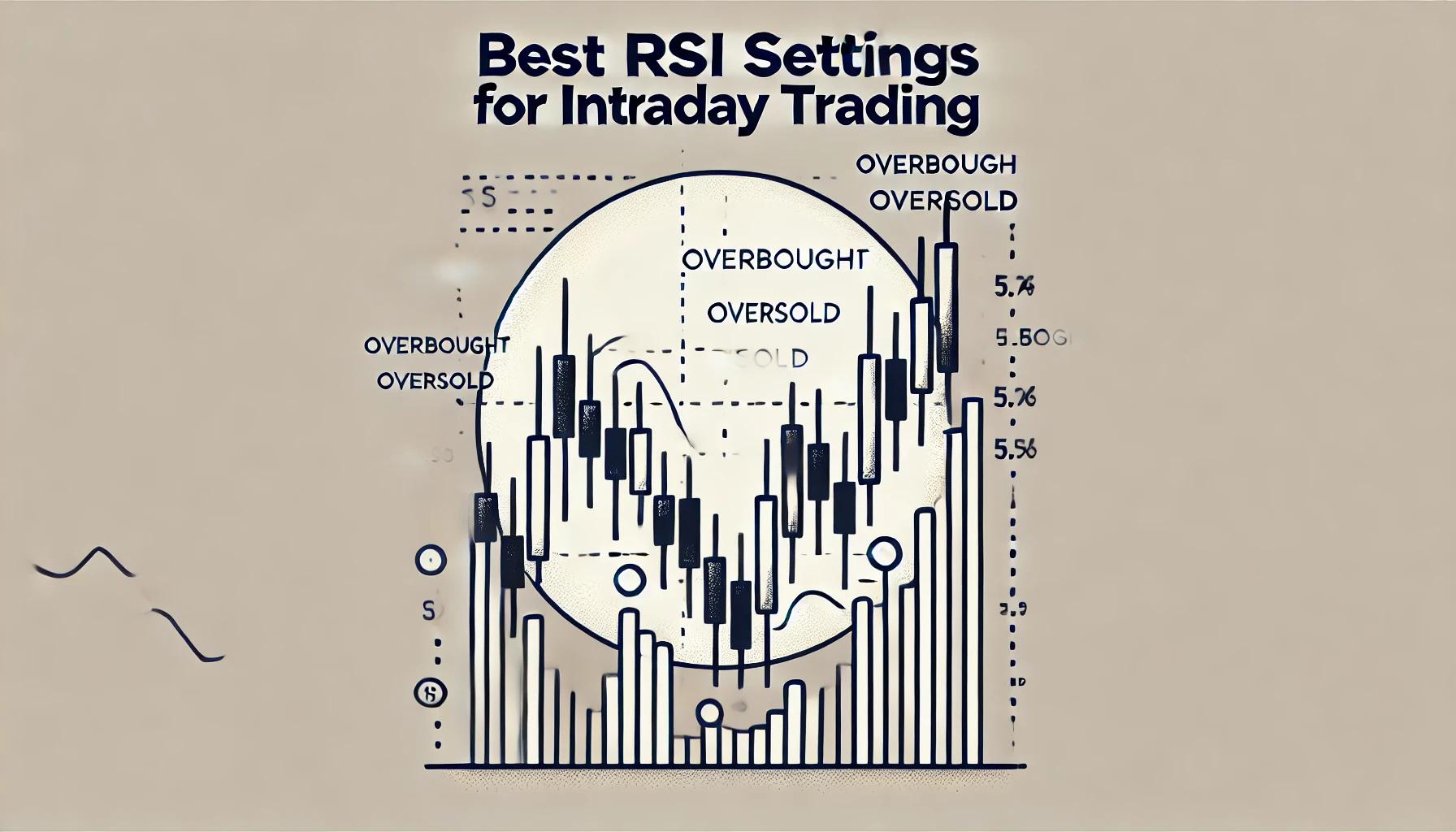Your cart is currently empty!
Best RSI Settings for Intraday Trading

The Relative Strength Index (RSI) is one of the most popular technical indicators used by traders to identify overbought and oversold conditions in the market. It measures the speed and change of price movements, providing a momentum indicator that ranges from 0 to 100. RSI is especially useful for day traders as it helps spot potential reversals and identify entry and exit points. However, the effectiveness of RSI largely depends on the settings used, particularly in the fast-paced world of intraday trading. This article will explore the best RSI settings for intraday trading, based on insights from experienced traders and financial experts.
1. Default vs. Optimized RSI Settings
The default setting for the RSI indicator is a 14-period RSI, which was popularized by J. Welles Wilder, the creator of the RSI. While the default setting works well for many traders, it may not be ideal for intraday trading, where shorter timeframes and increased market volatility require more agile settings.
According to TradersUnion, many intraday traders prefer to use a 7-period or 9-period RSI to make the indicator more sensitive to price movements. Shorter periods allow the RSI to respond more quickly to changes in price, making it suitable for capturing opportunities in fast-moving markets. However, using shorter periods also means that the RSI may generate more signals, including false ones, which is why it’s important to combine the RSI with other indicators or trading strategies.
2. RSI Settings for Different Timeframes
When it comes to intraday trading, selecting the appropriate RSI setting depends on the specific timeframe you are trading on. For traders who use a 1-minute or 5-minute chart, a shorter RSI period, such as 7 or 9, can help identify quick opportunities. This setting allows traders to spot overbought or oversold conditions and make decisions accordingly.
On the other hand, traders who prefer longer intraday timeframes, such as 15-minute or 30-minute charts, may find a 10-period or 14-period RSI to be more effective. As explained by Pippenguin, a slightly longer RSI period smoothens the price action and reduces the number of false signals, making it suitable for those who are looking for more reliable setups and less frequent trades.
3. Adjusting Overbought and Oversold Levels
The standard overbought and oversold levels for RSI are set at 70 and 30, respectively. However, for intraday trading, these levels can be adjusted to better suit market conditions. Stockstotrade suggests that day traders may find it useful to use levels such as 80 for overbought and 20 for oversold. These adjusted levels help filter out false signals during times of high volatility, reducing the likelihood of being whipsawed by sudden market moves.
By using more extreme levels, traders can focus on stronger price reversals, which can be particularly useful when the market is experiencing sharp moves. This approach helps minimize the chances of entering a trade prematurely based on weak signals, which is common during intraday trading.
4. Combining RSI with Other Indicators
While RSI can be effective on its own, its reliability increases when combined with other technical indicators or strategies. One popular approach is to combine RSI with moving averages. For example, ChoiceIndia suggests using RSI alongside a 20-period moving average to confirm trend direction. When the RSI indicates an oversold condition and the price is above the moving average, it may present a buying opportunity aligned with the prevailing trend.
Another useful combination is using RSI with support and resistance levels. By identifying key levels where price has historically reversed, traders can use the RSI to confirm potential reversals. If the RSI is in the oversold zone near a strong support level, it may indicate a high probability buying opportunity.
5. Using Divergences for Trade Setups
The divergence between the RSI and price action is another powerful tool for intraday traders. Divergence occurs when the price makes a new high or low, but the RSI fails to do the same. This can indicate a potential reversal, as the momentum behind the price move is weakening.
Bajaj Broking highlights the effectiveness of using divergence to spot trend reversals in intraday trading. For example, if the price makes a higher high but the RSI makes a lower high, it may signal a bearish reversal. Similarly, if the price makes a lower low while the RSI makes a higher low, it could indicate a bullish reversal. These signals are particularly effective when combined with shorter RSI settings, which can help traders capitalize on quick intraday reversals.
6. Tips for Using RSI Effectively in Intraday Trading
To maximize the effectiveness of RSI in intraday trading, consider the following tips:
Avoid Overtrading: Shorter RSI settings can generate numerous signals throughout the day. It’s important to avoid overtrading and only take signals that align with your overall trading strategy and market conditions.
Use Multiple Timeframes: Analyzing RSI across multiple timeframes can provide better context for your trades. For instance, if the RSI indicates an oversold condition on both the 5-minute and 15-minute charts, it could increase the probability of a successful trade.
Stay Aware of Market Conditions: RSI tends to work best in ranging markets, where prices move between support and resistance levels. During strong trending markets, RSI may generate false reversal signals. Adjust your strategy according to the prevailing market conditions to maximize success.
8. Conclusion: Finding the Best RSI Setting for You
There is no one-size-fits-all RSI setting for intraday trading, as the optimal setting depends on your trading style, the timeframe you are using, and your risk tolerance. Shorter RSI periods, such as 7 or 9, can provide more opportunities for quick trades, but they also come with the risk of false signals. Adjusting the overbought and oversold levels can further help filter out unreliable signals during volatile conditions.
The key to successful intraday trading with RSI is to experiment with different settings, backtest your strategy, and combine RSI with other technical indicators or methods to confirm signals. By finding the right balance, you can effectively use the RSI to enhance your intraday trading decisions and improve your overall profitability.

Mr. Rajeev Prakash
Rajeev is a well-known astrologer based in central India who has a deep understanding of both personal and mundane astrology. His team has been closely monitoring the movements of various global financial markets, including equities, precious metals, currency pairs, yields, and treasury bonds.
